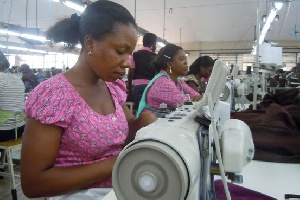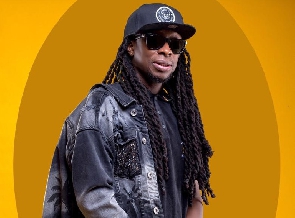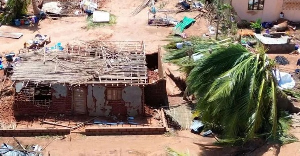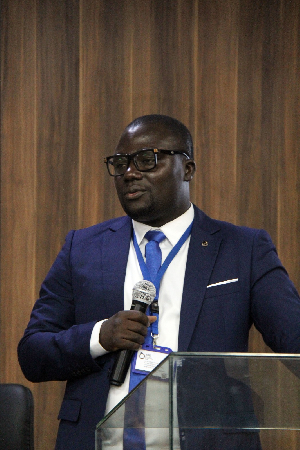ACCRA, Ghana—When Isaac Osae began his sewing career last year, he stitched tropical-colored sundresses. These days, the 24-year-old factory worker is learning to sew hospital smocks.
Along Africa's Atlantic coast, garment factories are giving up African couture to assemble scrubs, aprons and lab coats. The switch comes as global suppliers seek out Africa's low-cost, English-speaking labor and ports that are 10 days closer than Asia's garment factories are to the U.S. eastern seaboard.
"Ten days make a huge difference in the apparel business," says Clifford Schiffman, director of global sourcing for Itochu 8001.TO +0.49% Prominent USA LLC. The clothing wholesaler, a unit of Japanese conglomerate Itochu Corp., intends to order up to $50 million in dress shirts and slacks from Ghana over the next three years, planning to sell much of it to Wal-Mart Stores Inc. WMT +1.68%
"Africa for me, it's the next zone of apparel," Mr. Schiffman says.
Textile scouts such as Mr. Schiffman are heading to West Africa as India, Malaysia, Thailand and China have increased their minimum wages. Salaries in China climbed 10% in the first two months of this year alone, crimping profit margins for wholesalers, according to investment bank Standard Chartered PLC.
Wal-Mart bought more than a half million hospital scrubs this year from Ghana's Lucky 1888 Mills Ltd. Liberty & Justice, a sustainable development firm, makes 350,000 pairs of trousers a month in Ghana for U.S. buyers. In nearby Liberia, Liberty & Justice makes tote bags for New York's Godiva Chocolatier Inc.
But the garment business is a capricious industry that has swept in and out of Africa before.
Casualwear factories sprang up in East Africa in 2000 and tripled production in five years, after the U.S. Congress passed the African Growth and Opportunity Act. The law lets democratic countries on the continent ship to the U.S. duty-free.
But even with that advantage, East Africa's workrooms have struggled to win the massive orders that China's factories have. The law expires in 2015, and African textile tycoons say they will be forced to halt production if it isn't extended.
West Africa, meanwhile, isn't on the global garment trade's map. Decades of military dictatorship in almost every country in the region scared off investment.
The economy of Ghana, an English-speaking nation released from British rule in 1957, flatlined during 35 years of off-and-on dictatorship. In 2005 Ghana produced half the amount of clothing it did in 1977, the government says.
But Ghana now is a stable democracy with one of the world's fastest-growing economies.
That has brightened prospects for companies such as Dignity Industries. Last month, a walmart.com supplier expressed interest in placing orders from Dignity, where Mr. Osae grapples with his sewing machine.
First, though, the crew of self-taught needle workers must master mass production. A Filipino sewing instructor, hired by Dignity, taps the poorly stitched collar of a hospital gown. "You start again," she advises Mr. Osae.
"I know how to sew already," Mr. Osae tells a visitor. "It's just my stitches have to be straight."
Asian and Latin American dressmakers tend to sew faster. "Much faster," says Sandra Garcia, a Honduran sewing coach at Lucky 1888. If factories here want Ghana to compete with the world's biggest garment makers, they will have to assemble a medical scrub in eight minutes.
Tailors like Mr. Osae are paid $100 a month, a third of what seamstresses in some parts of China might expect, according to the World Bank. Still, Africa's clothing mills are burdened with power outages that send machines spinning to a stop.
Dignity's owner, Salma Salifu, opened shop in the 1990s with ambitions to export Ghana's high-fashion clothing to U.S. showrooms. At Dignity's peak, each year it shipped hundreds of colorful garments, termed afrocentrics by designers, during Black History Month, at up to $300 a dress. Former U.S. President Bill Clinton stopped by for a visit in 2002.
But stateside interest in afrocentrics appears to be waning. Many of the factories President Clinton toured have been boarded up. African-fashion boutiques in Philadelphia and Washington that have filed for bankruptcy owe Mrs. Salifu $36,000, she says.
So she has converted her factory. "We can't be sitting here doing sales one by one by one until Black History Month," she says. "Let's get the hospital scrubs on the floor. Our people will be working."
In October, Mrs. Salifu mailed her first prototype to a walmart.com supplier. She hopes to sell hospital smocks at $1 above her cost for fabric and thread, netting a two-cent profit. Factory owners nearby are competing for the same business.
Since last year, Lucky 1888 has shipped four containers of scrubs a month to a Wal-Mart supplier from a once-idle factory near the port outside Accra. Jonathan Simon, chief executive of the U.S.-Pakistani company, plans to triple production by 2015, install a fabric-weaving plant and truck in cotton from nearby Burkina Faso.
He intends to add 2,000 workers to his factory floor, where Janet Azure works a sewing machine.
Ms. Azure, 25, used to run her own workshop, stitching what designers here call slit and kaba: two-piece, traditional church dresses. She now makes $10 more a month sewing hospital smocks.
"The money is here," she says.
Write to Drew Hinshaw at drew.hinshaw@dowjones.com
Click to view details



Business News of Monday, 3 December 2012
Source: Wall Street Journal

















